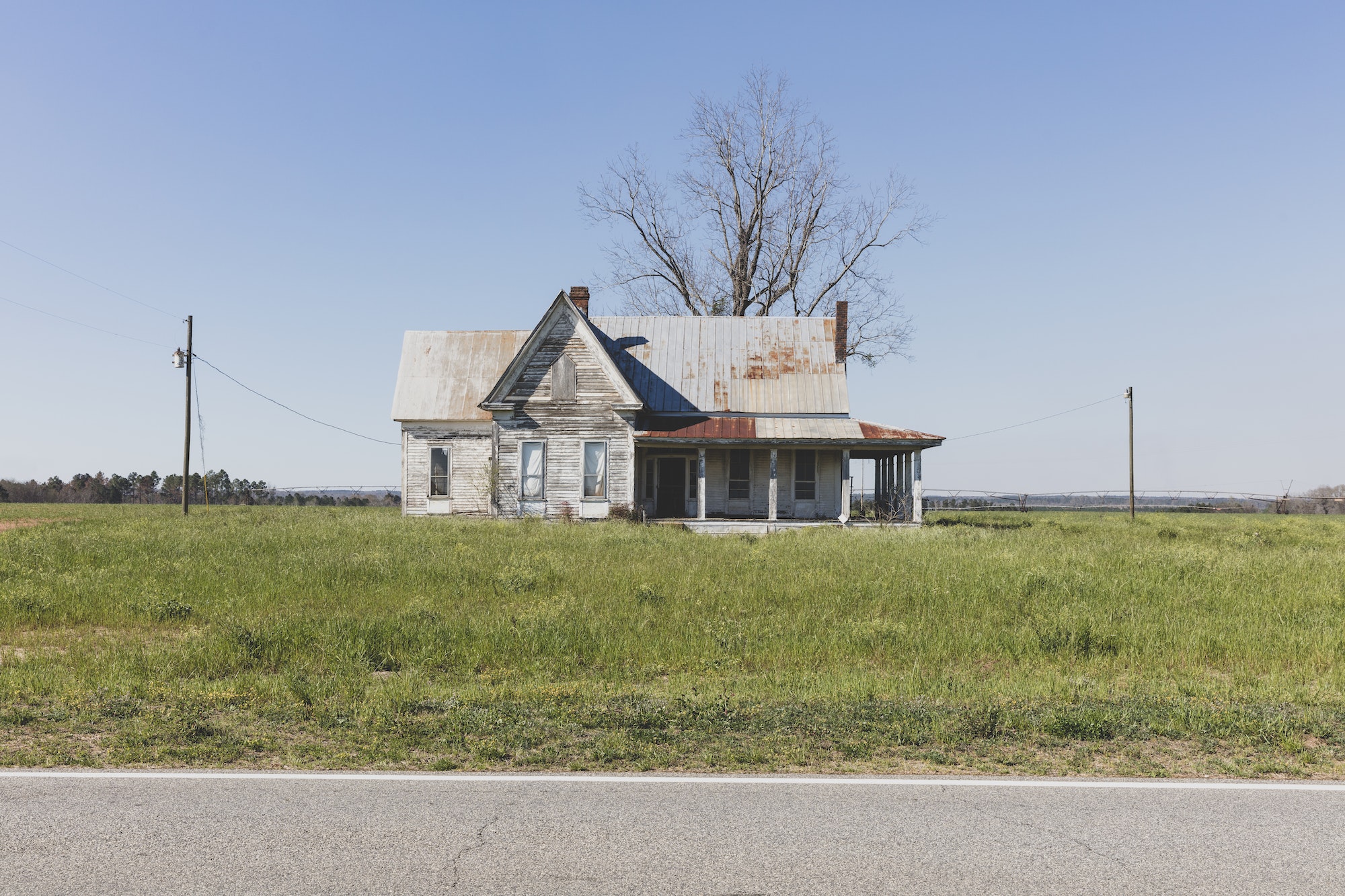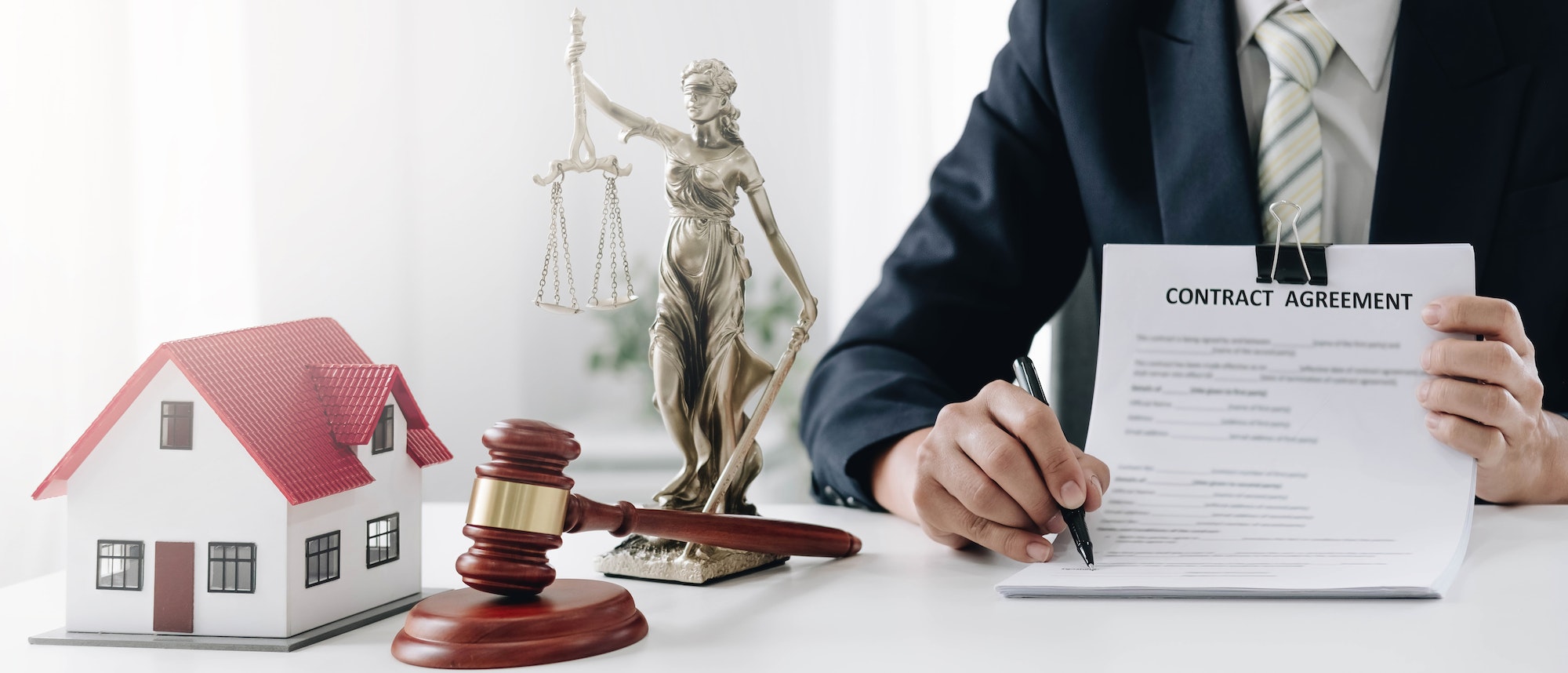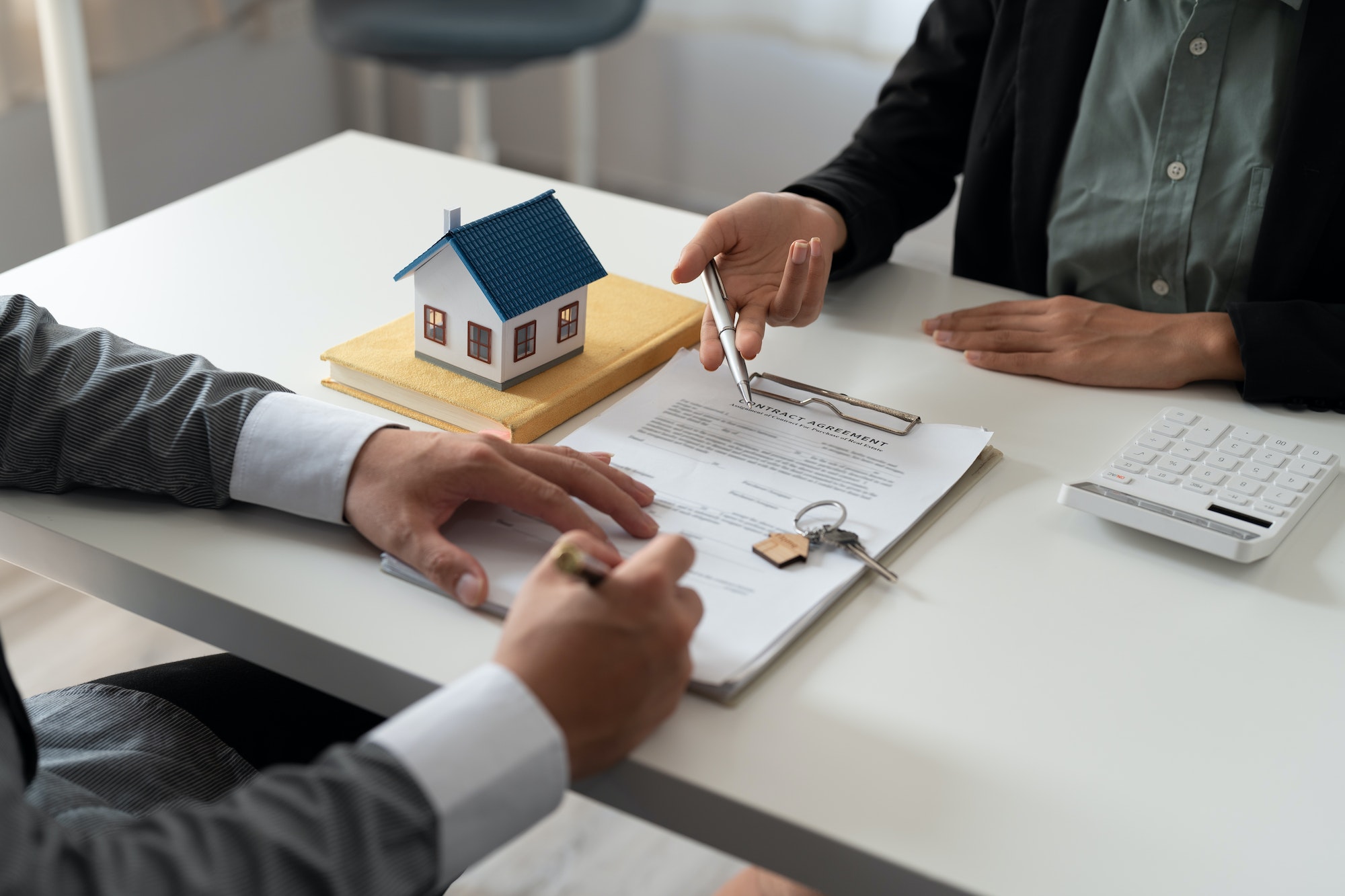Have you ever driven by an old, seemingly abandoned house and thought about the potential it holds? If so, you’re not alone. With over 16 million homes sitting vacant across the United States, the opportunity to own one of these hidden gems is more possible than you might think.
According to a 2020 study by LendingTree, states like Vermont, Maine, and Alaska have the highest vacancy rates, ranging between 20% and 22%. But don’t let these numbers fool you. A high vacancy rate doesn’t necessarily spell trouble for the housing market. In fact, it could mean that the area is rapidly building new homes to meet high buyer demand. Or, it could indicate that the area is a popular spot for secondary or vacation homes that remain unused for most of the year.
So, how do you go about buying an abandoned house? Let’s delve into the process.
Table of Contents
Research and Find Abandoned Properties: Your First Step to Buying an Abandoned House
The first step in buying an abandoned house is to find the properties. This might seem like a daunting task, but with the right approach and resources, it can be quite manageable. Here’s how you can go about it:
Online Resources: There are several online platforms and websites that list abandoned or foreclosed properties. Websites like Realtor, Zillow, or Foreclosure can be a good starting point. You can filter your search based on location, price, property type, and more.
Local Government Offices: Local government offices, such as the county’s clerk or recorder’s office, often have records of all properties within their jurisdiction. They can provide information about properties that are vacant, in foreclosure, or up for auction.
Real Estate Agents and Brokers: Real estate agents and brokers with experience in distressed properties can be a valuable resource. They often have access to listings and information that aren’t readily available to the public.
Drive Around: Sometimes, the old-fashioned way works best. Drive around neighborhoods you’re interested in and look for signs of abandonment, such as overgrown yards, boarded-up windows, or significant disrepair.
Public Auctions: Some abandoned properties are sold at public auctions, often due to unpaid taxes. Check with your local government offices for information about upcoming auctions.
Network: Let friends, family, and colleagues know that you’re interested in buying an abandoned property. They might have information or know someone who does.
Patience and persistence are key when searching for abandoned properties. It might take some time to find the right property, but with diligent research, you’re likely to find a house that suits your needs and budget.
Check Ownership Status: Unraveling the Mystery of Abandoned Properties
Once you’ve identified a potential abandoned property, the next crucial step is to determine who owns it. This can be a bit tricky, as the ownership status of abandoned properties can often be unclear. Here’s how you can go about it:
Property Tax Records: Every property in the U.S. is subject to property tax, and these records are public. You can visit your local county assessor’s office or their website to access these records. They will show the name and, often, the contact information of the property owner.
Title Search: A title search will provide a comprehensive history of the property, including past owners, and any liens, mortgages, or legal issues associated with the property. This can be done through a title company or a real estate attorney.
Local Government Offices: Local government offices such as the county clerk, recorder’s office, or tax assessor’s office can provide information about the current owner of the property.
Neighbors: Often, neighbors can provide valuable information about the property and its owner. They may know if the owner moved away, passed away, or if the property is in foreclosure.
Online Tools: There are online tools and services, like BeenVerified or PropertyShark, that can help you find out who owns a property. These services usually come with a fee.
It’s crucial to verify ownership before proceeding with any attempt to purchase an abandoned property. This step can help you avoid legal complications down the line. Once you’ve determined the owner, you can then reach out to them directly or through their legal representative to express your interest in the property.
Inspect the Property: Unveiling the True Condition of an Abandoned House
After identifying the owner of an abandoned house, the next step is to inspect the property. This is a crucial step in the process as abandoned houses can often be in a state of disrepair, and understanding the condition of the property will help you estimate the cost of renovations and repairs. Here’s how you can go about it:
Hire a Professional Inspector: A professional home inspector can provide a detailed report on the condition of the property. They will check the structural integrity of the house, the condition of the roof, plumbing, electrical systems, heating and cooling systems, and other key aspects of the property.
Look for Visible Signs of Damage: While a professional inspector will provide a detailed report, you can also look for visible signs of damage. This includes things like broken windows, damaged doors, leaks, mold, signs of pests, or structural damage.
Check the Property’s Systems: Abandoned properties often have outdated or non-functioning systems. Check the status of the property’s heating, cooling, electrical, and plumbing systems. These can be costly to repair or replace. If you find issues, you may need professional help with your heater or other essential systems to ensure everything is up to code. Addressing these problems early on can prevent more significant expenses down the line.
Assess the Neighborhood: The property’s location and the condition of the surrounding neighborhood can impact its value. Take note of factors like the quality of nearby schools, proximity to amenities, crime rates, and overall appeal of the neighborhood.
Estimate Repair Costs: Once you have a clear understanding of what needs to be repaired or replaced, you can begin to estimate the cost. You may want to bring in a contractor for a quote, especially for major repairs.
The cost of repairs and renovations should be factored into your budget when deciding whether or not to purchase an abandoned house. It’s also important to note that some lenders may require a property to meet certain standards before they will approve a mortgage, so a thorough inspection is crucial.
Understand Local Laws and Regulations: Navigating the Legal Landscape of Abandoned Houses
Before you proceed with the purchase of an abandoned house, it’s crucial to understand the local laws and regulations that govern such properties. These laws can vary significantly from one state or city to another, and understanding them can help you avoid potential legal complications down the line. Here’s what you need to do:
Research Local Property Laws: Start by researching the property laws in the area where the house is located. This includes laws related to property ownership, property transfer, foreclosure, squatter’s rights, and more.
Consult with a Real Estate Attorney: Given the complexity of property laws, it can be beneficial to consult with a real estate attorney. They can provide guidance on the legal aspects of buying an abandoned house and help you navigate any potential legal hurdles.
Understand Zoning Regulations: Zoning regulations dictate what a property can and cannot be used for. For example, a property zoned as residential cannot be used for commercial purposes. Make sure you understand the zoning regulations for the abandoned house you’re interested in.
Check for Liens or Encumbrances: An abandoned property may have liens or encumbrances on it, such as unpaid taxes or mortgage debts. These will need to be settled before the property can be transferred to a new owner.
Understand the Process for Buying Abandoned Properties: Some states or cities have specific processes for buying abandoned properties, especially if they’re owned by the government. This could involve auctions, lotteries, or specific application processes.
Understanding the local laws and regulations is not just about avoiding legal issues. It can also help you understand your rights and responsibilities as a property owner, which can help you make the most of your investment in an abandoned house.
Contact the Owner or Responsible Party: Initiating the Purchase of an Abandoned House
Once you’ve identified the owner of the abandoned house and have a clear understanding of the property’s condition and the local laws, the next step is to reach out to the owner or the party responsible for the property. Here’s how you can go about it:
Private Owners: If the property is owned by a private individual or entity, you can reach out to them directly. Express your interest in the property and inquire about the possibility of purchasing it. Be prepared for various scenarios – the owner might be eager to sell, or they might not be interested in selling at all.
Banks or Financial Institutions: If the property is owned by a bank or a financial institution, typically due to a foreclosure, you’ll need to contact the bank’s real estate-owned (REO) department. They can provide information about the process of purchasing the property.
Government-Owned Properties: If the property is owned by a government agency, you’ll need to contact the relevant department. This could be the city or county housing department or a federal agency like the Department of Housing and Urban Development (HUD). Government-owned properties are often sold through auctions or direct sales.
Legal Representatives: In some cases, the owner of the property might have a legal representative, such as an attorney or an executor of an estate. In such cases, you’ll need to contact the representative.
Communication is key in this step. Be respectful and patient, as the process can take time. Also, be prepared to negotiate – the asking price for an abandoned property can often be negotiated down, especially if the property requires significant repairs.
Negotiate the Price: Securing the Best Deal for an Abandoned House
Once you’ve established contact with the owner or responsible party and expressed your interest in the property, the next step is to negotiate the price. This can be a critical phase in the process of buying an abandoned house, as it can significantly impact the overall cost of your investment. Here’s how you can approach it:
Understand the Market: Start by understanding the real estate market in the area where the property is located. Look at the prices of similar properties in the area, and consider the condition of the property and the cost of any necessary repairs or renovations.
Get a Property Appraisal: It can be beneficial to get a professional appraisal of the property. An appraiser can provide an unbiased estimate of the property’s value, which can be a useful tool in negotiations.
Consider the Costs of Repairs and Renovations: When negotiating the price, consider the cost of any necessary repairs or renovations. If the property requires significant work, you can use this to justify a lower offer.
Be Prepared to Walk Away: If the owner or responsible party is not willing to negotiate on the price, be prepared to walk away. There are many abandoned properties out there, and it’s important to find one that fits within your budget.
Work with a Real Estate Agent: A real estate agent experienced in dealing with abandoned properties can be a valuable ally during negotiations. They can provide advice, help you navigate the process, and negotiate on your behalf.
The goal of negotiation is to arrive at a price that is acceptable to both you and the seller. Be respectful, patient, and flexible, and with the right approach, you can secure a great deal on an abandoned house.
Secure Financing: Funding Your Abandoned House Purchase
Securing financing is a critical step in the process of buying an abandoned house. Given the unique challenges and potential costs associated with abandoned properties, this step might require some additional considerations. Here’s how you can approach it:
Traditional Mortgage: If the property is in a condition that meets the lender’s standards, you might be able to secure a traditional mortgage. However, keep in mind that many lenders may be hesitant to finance an abandoned property, especially if it requires significant repairs.
Renovation Loan: If the property requires substantial work, a renovation loan might be a good option. These loans, such as the FHA 203(k) loan or the Fannie Mae HomeStyle loan, provide funds for both the purchase of the property and the necessary renovations.
Hard Money Loan: Hard money loans are short-term loans provided by private investors or companies. They are often easier to qualify for than traditional loans and can be a good option for properties that need significant work. However, they typically have higher interest rates.
Cash Purchase: If you have the means, purchasing the property outright with cash can be a straightforward option. This can make the purchase process quicker and simpler, and it can be appealing to sellers.
Investment Partners: If the cost of the property and the necessary renovations is high, you might consider bringing in investment partners. This can help spread out the financial risk and provide additional funding.
It’s important to secure financing before making an offer on the property. This will ensure that you’re ready to move forward once the seller accepts your offer. It’s also a good idea to shop around and explore different financing options to find the one that best fits your needs and circumstances.
Close the Sale: Finalizing Your Abandoned House Purchase
Closing the sale is the final step in the process of buying an abandoned house. This is when the property officially changes hands from the seller to you. Here’s what you can expect during this phase:
Review the Sales Contract: The sales contract outlines the terms of the sale, including the purchase price, closing date, and any contingencies. Make sure you understand all the terms before signing.
Secure Title Insurance: Title insurance protects you from any issues that might arise with the property’s title after the sale. This can include things like liens, encumbrances, or ownership disputes.
Final Walkthrough: Before closing, you’ll typically have the opportunity to do a final walkthrough of the property. This is your chance to ensure that the property is in the agreed-upon condition and that no new issues have arisen.
Closing Costs: Be prepared to pay closing costs, which can include things like loan origination fees, appraisal fees, and escrow fees. These typically amount to 2-5% of the purchase price.
Sign the Closing Documents: At the closing, you’ll sign a number of documents, including the deed, which transfers ownership of the property to you, and the mortgage agreement, if you’re financing the property.
Receive the Keys: Once all the documents are signed and the funds have been transferred, you’ll receive the keys to your new property!
Closing on a property can be a complex process, and it’s important to have a good understanding of each step. Working with a real estate agent or attorney can be helpful in navigating this process. With the right preparation and guidance, you can successfully close the sale and become the owner of an abandoned house.
Plan for Renovations: Breathing New Life into an Abandoned House
Once you’ve closed the sale and the keys are in your hands, the real work begins. Abandoned houses often require significant renovations to make them livable and comfortable. Here’s how you can approach this phase:
Assess the Condition: Start by assessing the condition of the house. You likely did this before purchasing, but now is the time to take a closer look. Identify what needs to be repaired, replaced, or updated.
Create a Budget: Based on your assessment, create a budget for the renovations. Be sure to factor in all costs, including materials, labor, permits, and a contingency for unexpected expenses.
Prioritize Projects: Not all renovations need to be done at once. Prioritize projects based on what’s most urgent or important. For example, fixing a leaky roof or outdated electrical system should take precedence over cosmetic updates.
Hire Professionals: Unless you’re experienced in home renovations, you’ll likely need to hire professionals. This could include a general contractor, electrician, plumber, or other specialists. Be sure to get multiple quotes to ensure you’re getting a fair price.
Secure Permits: Depending on the scope of your renovations, you may need to secure permits from your local city or county. This can include permits for structural changes, electrical work, plumbing, and more.
Plan for the Unexpected: When renovating an abandoned house, unexpected issues often arise. This could include hidden water damage, structural issues, or outdated systems that need updating. Be prepared for these surprises and have a contingency plan in place.
Renovating an abandoned house can be a significant undertaking, but it also offers the opportunity to create a home that’s truly your own. With careful planning, a realistic budget, and the right team of professionals, you can breathe new life into an abandoned house and make it a home.
Move In or Rent Out: Making the Most of Your Abandoned House Purchase
After the renovations are complete, it’s time to decide what to do with the property. Whether you choose to move in or rent it out, both options come with their own set of considerations. Here’s what you need to think about:
Moving In: If you plan to make the abandoned house your new home, consider the following:
- Final Touches: Make sure all renovations are complete and the house is cleaned and ready for move-in. This might include final paint touch-ups, deep cleaning, and setting up utilities and services.
- Moving Logistics: Plan your move carefully. This includes hiring movers, packing, changing your address, and arranging for the transportation of your belongings.
- Home Insurance: Don’t forget to secure home insurance for your new property. This will protect you from potential damages or losses.
Renting Out: If you plan to rent out the property, consider the following:
- Market Research: Research the local rental market to determine a fair rental price. Consider factors like location, size, amenities, and the condition of the property.
- Find Tenants: Advertise the property, screen potential tenants, and prepare a lease agreement. Consider hiring a property management company if you don’t want to handle these tasks yourself.
- Landlord Responsibilities: As a landlord, you’ll have responsibilities like maintaining the property, handling repairs, and dealing with tenant issues. Make sure you’re prepared for these tasks.
Whether you decide to move in or rent out, owning an abandoned house can be a rewarding experience. It’s a chance to restore a piece of history, create a unique living space, or provide a home for others in your community. Enjoy the journey!
Discover more from Futurist Architecture
Subscribe to get the latest posts sent to your email.




